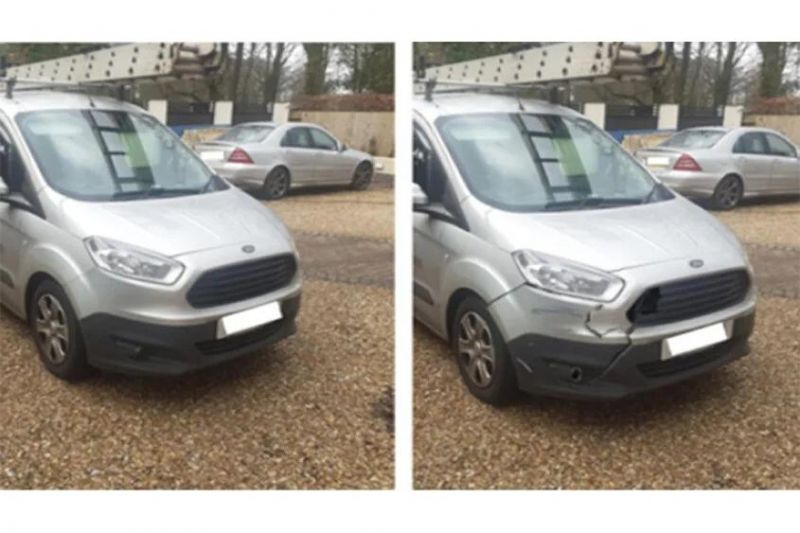Artificial intelligence (AI) is being used to detect cancer cells, write essays… and commit insurance fraud.
Scammers have been caught using AI technology to doctor photos for fraudulent car insurance claims, often adding fake damage from an accident that never happened.
In an investigation conducted by Allianz in the UK, it was found that instances of such cases have increased by as much as 300 per cent across the insurance industry in the past year.
Generative AI features on photo editing apps have been around for a while, however utilising them to edit and submit doctored images and videos as evidence in fraudulent insurance claims has become much more prevalent in recent years.
Dubbed “shallowfakes”, these images are sometimes (but not always) fairly convincing and an example of scammers adapting their methods in an attempt to benefit from new technology.

Photo credit: Auto Express
In one such case, an individual who had posted a picture of his work van on social media had a claim pursued in his name for an accident that never took place.
Liverpool Victoria (LV=), an insurer owned by Allianz, received images of the van that showed a cracked bumper, claimed to be the result of an accident, as well as a false repair bill of more than £1000 (around A$1900).
The company’s fraud team had concerns, and upon investigating the case found the image was identical to the one found on social media, albeit with the addition of the fake damage.
Allianz says that in response to the increase in fraudulent claims, it has partnered with voice analytics tool Clearspeed to detect more fraud and accelerate the processing of genuine claims.
The partnership comes after Allianz’s personal lines business in the UK reported a 29 per cent increase in fraud prevention in 2023 compared to the previous year.






